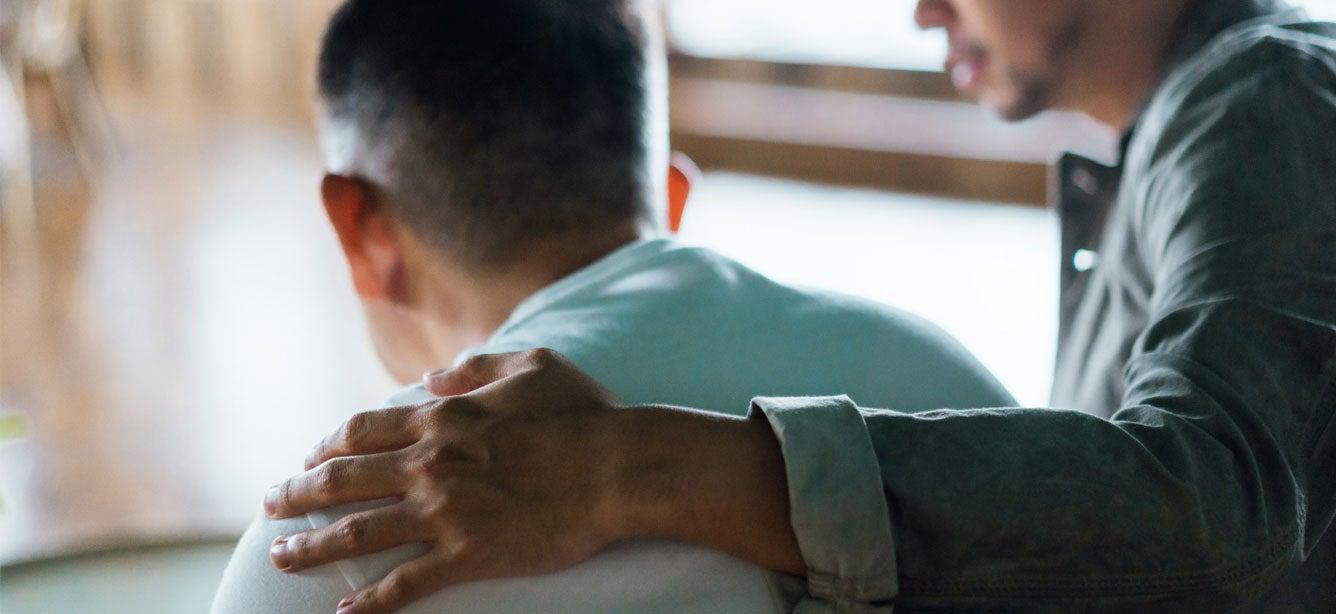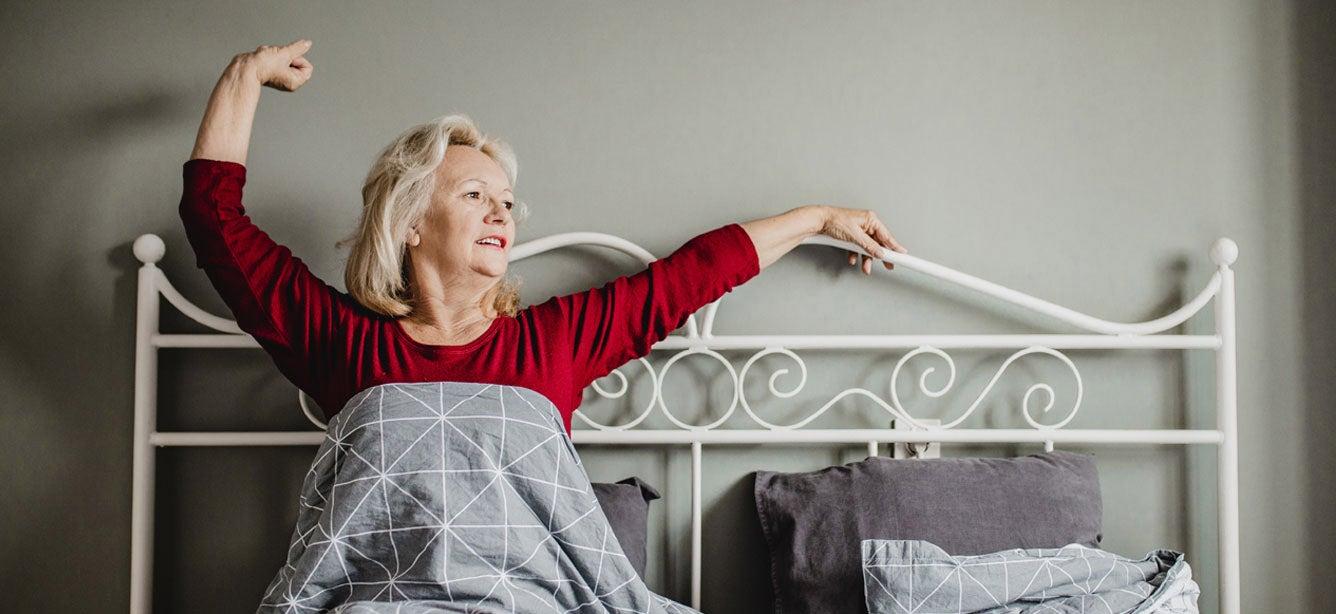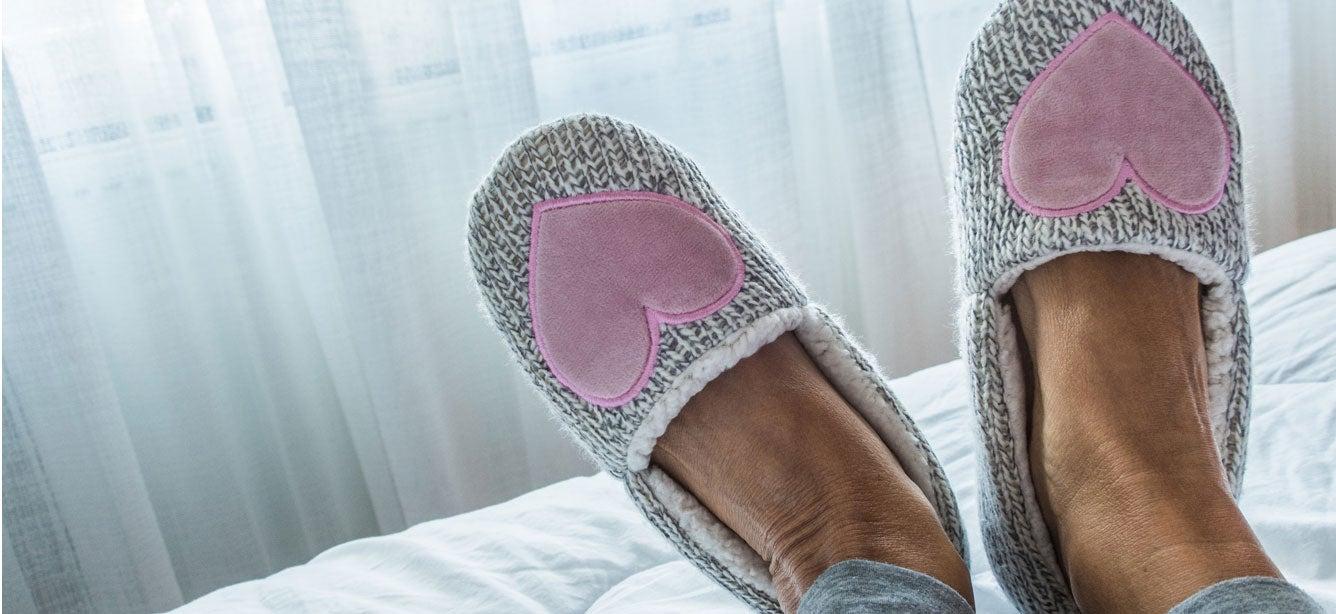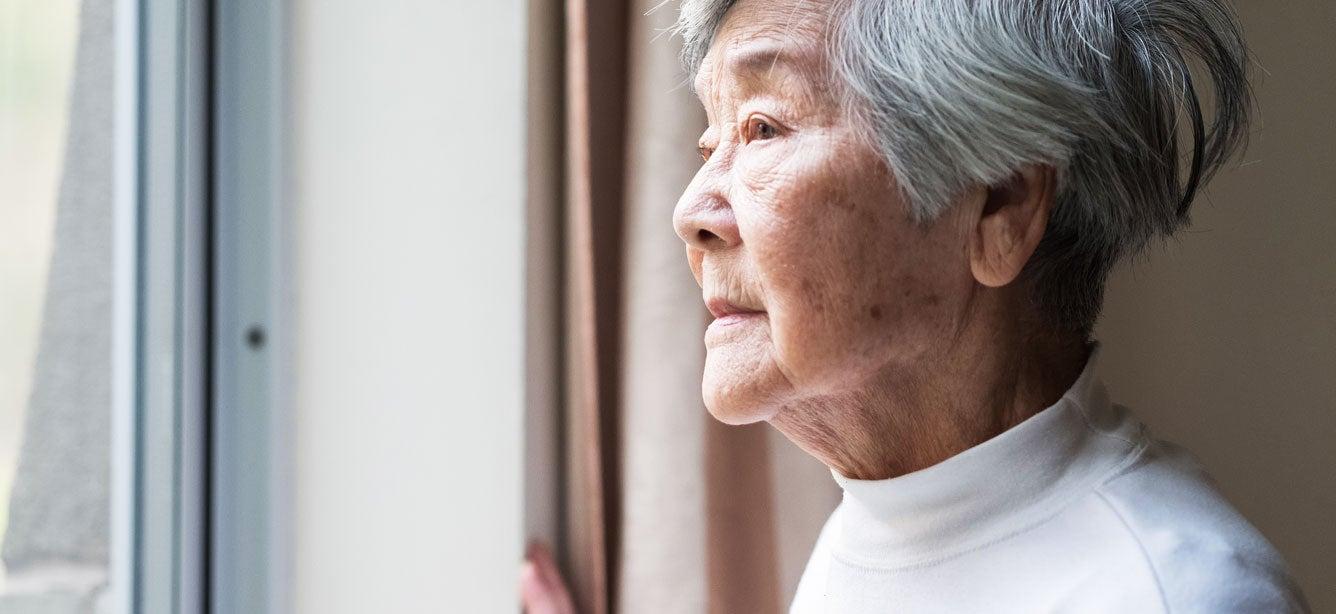
Related Topics
Anxiety is a natural response to many life stressors, such as meeting new people, speaking in public, or getting lost in an unfamiliar place. But when those anxious feelings become overwhelming and make everyday life more difficult, it may be a sign of an anxiety disorder. Anxiety is thought to affect as many as 10% - 20% of the older population, although it often goes undiagnosed.1
What are the symptoms of an anxiety disorder?
Symptoms of anxiety vary from person to person. But in general, mental and behavioral signs of an anxiety disorder include:
- Uncontrollable feelings of panic, fear, and/or apprehension
- Obsessive thoughts
- Reactions that are disproportional to the triggering fear
- Restlessness
- Trouble with memory and focus
- Insomnia
- Nightmares
- Refusal to engage in routine activities
- Ritualistic behaviors (e.g., repeated handwashing)
Anxiety is often accompanied by physical signs such as:
- Racing heart, or heart palpitations
- Trembling
- Hot flashes
- Headaches
- Frequent urination
- Shortness of breath
- Nausea
- Tense muscles
- Excessive sweating
- Cold or sweaty hands
- Dry mouth
While symptoms are an important aspect of diagnosing anxiety in older adults, even more critical is how these symptoms affect day-to-day living. Anxiety is considered problematic when it interferes with your daily functioning, your quality of life, and even your health.
What is the most common anxiety disorder in older adults?
Generalized Anxiety Disorder (GAD) is believed to be the most common anxiety disorder among older adults. People who have GAD find themselves constantly worrying about many things. They fear the worst in every situation, even if that fear is unfounded. Adults suffering from GAD may feel like they're always on edge and in a high state of alert. They may know their nervousness is excessive, but feel a lack of control over their emotions. GAD tends to be more common in older women compared to older men, particularly in the event of divorce, separation, or the loss of a spouse or partner.
Other types of anxiety disorders affecting older adults include:
- Social anxiety disorder: Adults with social anxiety feel extreme nervousness and self-consciousness in everyday scenarios involving other people. They fear judgement from others and worry they'll do something to embarrass themselves. They may actively avoid social situations and have a hard time making and maintaining friendships.
- Phobia: If a person has an extreme, debilitating fear of something that does not pose a major threat—and this fear leads to avoidance of specific situations or objects—it's called a phobia. Some common phobias include dental procedures, the outside world (agoraphobia), heights, insects, thunderstorms, and driving a vehicle.
- Obsessive-compulsive disorder (OCD): Older adults with OCD struggle with unwanted, recurring thoughts or compulsions. They often feel that by performing certain actions repeatedly (e.g., counting the number of tiles on the floor), they will be able to feel a sense of control. Intrusive disturbing thoughts, like being injured in a car accident, are also a form of OCD.
What are some causes of anxiety in older adults?
Anxiety doesn’t always have a specific cause, and scientists aren’t completely clear why some adults suffer from excessive anxiety. It’s possible that multiple situational and environmental triggers are at play. Some common risk factors for anxiety disorders in seniors include:
- Stressful life events (e.g., death of a loved one)
- Limited physical mobility
- Loss of independence
- Financial insecurity
- Sleep disturbances (e.g., insomnia)
- Chronic health conditions (e.g., diabetes, obesity)
- Side effects of medications (e.g., steroids, stimulants)
- Misuse / abuse of alcohol or prescription medications
- Trauma from childhood
There may also be physiological risk factors for anxiety disorders in older adults. Some people have a chemical imbalance brought on by extreme stress. Anxiety may also run in families. For example, if your mother had GAD, you’re at greater risk for developing it, too.
If your anxiety is having a negative impact on your life, it's time to speak to your health care provider. They'll likely start with a complete physical exam to help rule out any potential medical causes of your symptoms. If there are no signs of physical illness, your provider may refer you to a licensed mental health counselor, psychologist, or psychiatrist. These professionals are specially trained to diagnose anxiety, depression, and other mental health disorders through interviews and other assessment tools.
How do you treat severe anxiety in older adults?
Too many older adults neglect to seek help for their anxiety due to shame and a lack of understanding about mental illness. That’s why it’s important to know that an anxiety disorder is not something you can control or will away. It’s considered a chronic health condition that requires medical treatment, just like diabetes or high blood pressure. Anxiety disorders are generally treated using talk therapy, medication, or a combination of both.
- Talk therapy (also called psychotherapy or counseling) is conducted one-on-one with a therapist or counselor. Many anxiety sufferers benefit from a type of therapy called exposure therapy. It involves tackling your fears head-on in order to become more comfortable with those activities or objects. Cognitive behavioral therapy (CBT) is another therapeutic approach used with anxiety disorders. CBT helps you identify harmful, anxiety-provoking thought patterns and work on changing them. Many therapists now offer online therapy services, which are a convenient alternative to traveling to a provider’s office.
- Prescription medications can help alleviate feelings of panic or nervousness and allow you to function more normally. Some of the medications used to relieve anxiety include anti-anxiety medications (e.g., benzodiazepines) and antidepressants such as serotonin reuptake inhibitors (SSRIs), serotonin-norepinephrine reuptake inhibitors (SNRIs), and tricyclic antidepressants (TCAs). Beta blockers, normally used to treat hypertension, have been found to be helpful in reducing some of the physical symptoms of anxiety.
How can older adults manage anxiety?
You should seek professional help if your anxiety exceeds typical, everyday worries. But practicing healthy habits and lifestyle behaviors can help make your anxiety more manageable:
- Talk it out: Oftentimes, sharing our feelings and experiences can help us feel less anxious. Consider joining an online or in-person support group for those with anxiety disorders, or talk with a trusted friend, family member, or spiritual leader.
- Manage your stress: Meditation, yoga, mindfulness, deep breathing, and other stress management techniques can help relieve the physical symptoms of anxiety and make you feel more relaxed.
- Avoid stimulants: Certain substances can worsen anxiety disorder symptoms. These include caffeine, nicotine, over-the-counter cold medications, alcohol, and certain herbal supplements.
- Get plenty of sleep: A study by University of California, Berkeley researchers showed that sleeplessness can increase anxiety by up to 30% the next day.2 Older adults should aim to get 7 to 9 hours of sleep per night.
Severe anxiety is not a normal part of aging—and you don’t have to accept living with it. If excessive worry is keeping you from a happy and productive life, talk to your doctor. Today’s anxiety treatments are safe and effective and can help you feel like yourself again.
“As we get older, caring for our mental health becomes just as important as our physical health,” said Kathleen Cameron, former Senior Director of NCOA’s Center for Healthy Aging.
Taking small steps like staying connected with friends and family, practicing mindfulness, and seeking support when needed can make a big difference. It’s never too late to prioritize your mental and emotional well-being,” she said.
Learn more about mental health for older adults and get resources to help you manage your well-being as you age.
Sources
1. American Association for Geriatric Psychiatry. Anxiety and Older Adults: Overcoming Worry and Fear. October 27, 2022. Found on the internet at https://aagponline.org/patient-article/anxiety-and-older-adults-overcoming-worry-and-fear/
2. Eti Ben Simon, et. al. Overanxious and underslept. Nature. November 4, 2019. Found on the internet at https://www.nature.com/articles/s41562-019-0754-8



